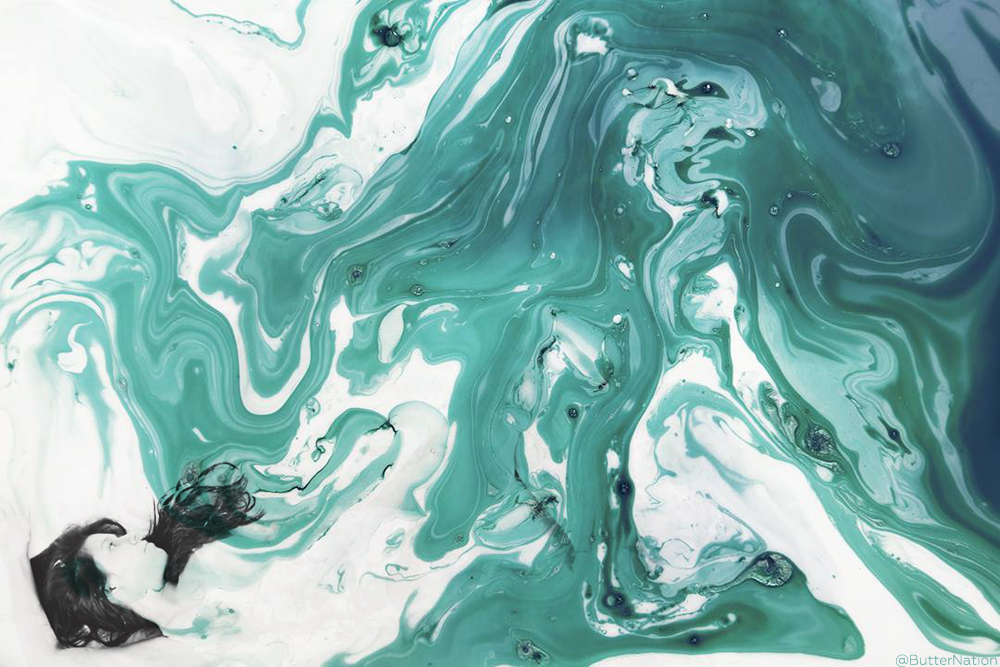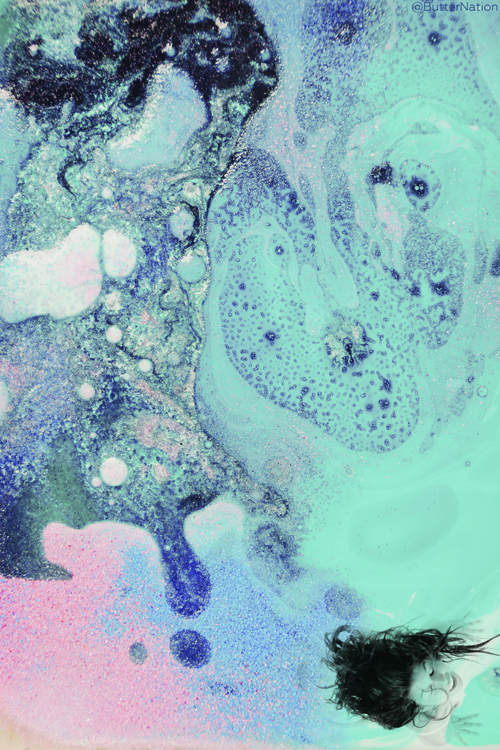
Turning 30 has made me wish for the ocean more than ever.
I am fully intrigued by its greatness, its profound depth and its ability to transform as the moment, place, and the time shifts throughout the day. Today I wake up sensing the sea like a mirror—with its unknown immensity and capacity of reflecting our inner unconsciousness.
For the first time, I will scuba dive and fortunately, accompanied by beloved friends. Those who partake in the follies, who constantly battle their fears,and recharge themselves with new knowledge and curiosities are those who make dreams realities. I feel these 30 years of life as 30 years of opportunities. Today more than ever, I am open to continuing my evolution, battling my fears and finding new dimensions to better living.
It is easy to imagine the feeling of being under the sea and finding an unknown universe. If you think about it, it sounds scary being that deep and acknowledging the insignificance of our own being in the midst of the ocean’s greatness.
Fear is one of our most powerful emotions: A positive one that protects us by alerting us to danger and communicating it as quickly and efficiently as possible through our system. And it’s a negative emotion that stops us from going beyond our limits, that blocks our abilities to explore the unexplored, that vanishes our curiosity for the unknown, and often responds by feeding our insecurities.

I can sense the way a regular yoga practice provides handy tools to control our physical reactions to fear and our unbalanced states of mind.
For example, breathing techniques like pranayama can regulate blood pressure, slow down a fast–paced metabolism, and release muscle tension. A regular yoga practice allows us to clear and silence the mind while transforming negative thoughts, like fear, into positive ones that inspire us and give us the emotional strength needed to move forward and keep nurturing our paths.
Here I share the pranayama sequence for beginners as taught by Sri O.P Tiwari. I would recommend finding a teacher to adjust the practice according to your breathing capacities and doshic composition.
These include:
>> Nadi Shodhana or alternate nasal breathing, with or without retentions.
>> Ujjayi: victorious breathing by inhaling and exhaling through the nose while making the sound of the ocean accompanied by Surya Bhedan—inhaling through the right and exhaling through the left nostril.
>> Kaphalabati followed by Chandra Bhedan: inhaling through the left and exhaling through the right nostril.
>> Bhastrika as the combination of one Kaphalabati and one Surya Bhedan.
>> Sheeta Li: inhaling by the mouth with the tongue curled and exhaling by both nostrils with retentions for some practitioners.
As an Ashtangi I feel fully passionate about teaching the Ashtanga method in a gentle and preventative way, by adapting the practice to all students’ needs. I fully believe in the fierce power of the practice and its capacity to empower our minds to battle our deepest fears. It is important to understand the tools used in the Ashtanga method:
Firstly, the Ujjayi breath serves the purpose of flowing safely and steadily throughout the practice while calming the mind, controlling the amount of breath coming in and out, and eventually developing inner awareness and peace.
Secondly, the Bandhas: Mula, Uddiyana, Jalandhara translated into energetic locks or the breaks of the dynamic flow, allow the spine to lengthen safely by engaging key muscles of the body, and stimulating the prana or life energy to upwardly flow throughout the body so we feel feel inner power.
Thirdly, the Drishti or focal point for each pose helps with concentration by setting a point to gaze at, while channelizing the energies, attaining deeper concentration and eventually reaching a meditative state.
The Ashtanga Vinyasa Yoga system was created by Sri Pattabhi Jois in Mysore, India, the guru who repeatedly said “Practice and all is coming.” One could refer to Ashtanga Vinyasa Yoga as the base of all dynamic Vinyasa Yoga styles, as its core is the full synchronization of the Ujjayi Pranayama with a set sequence of dynamic poses. Such sequences are created to be detoxifying. They are anatomically driven to allow the body to gradually warm up, while stimulating a full awareness of our weaknesses and our connection to our body.
The word Ashtanga means eight limbs or steps of practice to attain greater control of our minds, while finding true inner peace and happiness. Inspired by my teachers Linda Munro and Gérald Disse, I recommend starting with the pranayama practice complemented by the physical aspect of the practice (Asanas known as the third limb). What I find the most appropriate is to first find a good teacher who can guide and teach you the bases of the Ashtanga practice, and as the time passes one can set up a daily morning self-practice.
I feel the Ashtanga method allows us to visualize our fears and empower us to work them out.
When we live in constant fear, we feed upon our insecurities and our lives are governed by an unreal version of reality—not only from our physical and psychological world, but from our disassociation from our inner world.
We dedicate our lives to searching for sources of strength, security and happiness—through love and family, friends, pets, professional development, education, unique experiences, yoga, sports, and for some, material belongings. The wise say that when we live without fear we are ready to start living. When we are able to connect with our true reality, we are free of limits and dependency and our life possibilities are endless, just as the ocean and its unknown universe: pure, happy and peaceful.
For now I will dive and ramble in my greatest gift of life: being under the ocean.
Author: Carolina Daza
Images: Carolina Daza @TheGlobalYogini, Graphic design: Butter Nation
Editors: Catherine Monkman; Renée Picard








Read 0 comments and reply